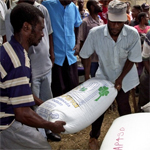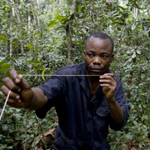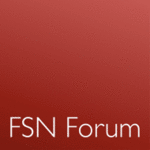UN Food and Agriculture Organization (FAO)
Sections for United Nations (UN).
- United Nations (UN). Information.
- UN Food and Agriculture Organization (FAO)
UN Food and Agriculture Organization (FAO)
> UN Food and Agriculture Organization (FAO).
The Food and Agriculture Organization of the United Nations (FAO) is working with its Members and the entire international community for achievement of the Millennium Development Goals.
These eight goals – each with specific targets and indicators – are based on the United Nations Millennium Declaration, signed by world leaders in September 2000. They commit the international community to combating poverty, hunger, disease, illiteracy, environmental degradation, and discrimination against women.
![]()
The eight Millennium Development Goals are:
Goal 1: Eradicate extreme poverty and hunger
Goal 2: Achieve universal primary education
Goal 3: Promote gender equality and empower women
Goal 4: Reduce child mortality
Goal 5: Improve maternal health
Goal 6: Combat HIV/AIDS, malaria and other diseases
Goal 7: Ensure environmental sustainability
Goal 8: Develop a Global Partnership for Development
Goal 1 relates directly to hunger, which is the primary global issue of concern for FAO. Some developing countries have made impressive gains in achieving the hunger-related targets, but many are falling behind. For more information on the prevalence of hunger worldwide, see The State of Food Insecurity in the World, published annually by FAO.

>> Goal 1: Eradicate extreme poverty and hunger
The number of hungry people in the world remains unacceptably high despite expected recent gains that have pushed the figure below 1 billion. FAO estimates that the number of people who will suffer from chronic hunger in 2010 is 925 million.
FAO focuses on poverty and hunger reduction through: improving agricultural productivity and incomes and promoting better nutritional practices at all levels and programmes that enhance direct and immediate access to food by the neediest. FAO helps developing countries to improve agriculture, forestry and fisheries practices, to sustainably manage their forest, fisheries and natural resources and ensure good nutrition for all. FAO promotes greater investment in agriculture and rural development and has assisted governments to establish National Programmes for Food Security aimed at smallholder farmers. In emergency response and rehabilitation efforts, FAO’s expertise in farming, livestock, fisheries and forestry is crucial. FAO works quickly to restore agricultural production, strengthen the survival strategies of those affected, and enable people to reduce their dependence on food aid. FAO also plays a crucial role in prevention, preparedness and early warning.
>> Goal 2: Achieve universal primary education
About 72 million primary school age children do not attend school. Over four out of five of these children live in rural areas. The urban-rural knowledge and education divide is today’s main barrier to achieving universal primary education by 2015. At the same time the learning ability of rural children is compromised by hunger and malnutrition. Food security and education need to be tackled simultaneously to develop the capacity of rural people to feed themselves and overcome poverty, hunger and illiteracy.
FAO is the UN lead agency for Education for Rural People (ERP), a network of about 370 partners including governments, civil society and the private sector. ERP fosters rural peoples’ capacity to be food secure and to manage natural resources in a sustainable way through increased access to quality education and skills training for all rural children, youth and adults. FAO also provides technical assistance to member countries for implementing school gardens and school-feeding programmes, which can encourage school attendance and bring direct nutritional benefits to children.
>> Goal 3: Promote gender equality and empower women
FAO recognizes the importance of promoting the full and equitable participation of rural women and men in efforts to improve food security, reduce poverty, and fuel social and economic development. Without rural women’s economic and social empowerment and gender equality, food security will not be achieved. FAO promotes the equal participation of rural women in decision making processes, employment opportunities and access to and control of resources.
FAO develops tool kits, guidelines and training programmes for the production and analysis of sex disaggregated data that enable targeted intervention on the vital role rural men and women play in ensuring food security, especially at the household level. FAO builds technical capacity among member countries to address gender issues in policy and programme development; works directly with rural women and men to strengthen their agricultural and livelihoods skills; assists member countries to identify and remove obstacles to women’s equal participation and decision-making; supports the formulation of gender-sensitive national and regional agricultural policies; links rural women and men through an information and communication network; and shares good practices that highlight women’s roles.
>> Goal 4: Reduce child mortality
Undernutrition is estimated to be an underlying cause in more than one-third of all deaths in children under five. Programmes to improve household food security and nutrition information increase children’s chances of growing to adulthood. FAO programmes assist poor households and communities to secure access to nutritionally adequate diets and reduce child undernutrition. Activities include: community-centred initiatives, training materials, nutrition education programmes, training programmes for national and local staff, and promotion of a forum on household food security and community nutrition.
Improved complementary feeding for young children, i.e. giving foods in addition to breastmilk, is an important way to prevent undernutrition and reduce child mortality. FAO helps countries strengthen local capacities to improve complementary feeding for young children, using locally available and affordable foods. Through linking household food security with nutrition education, improved complementary feeding using family foods is feasible even in resource poor environments. Programmes have been successfully implemented in Afghanistan and Zambia and FAO is now applying this approach in more countries. FAO is also part of the Renewed Efforts against Child Hunger and Undernutrition (REACH) in partnership with UNICEF, WHO and WFP.
>> Goal 5: Improve maternal health
Improving maternal health is key to saving the lives of more than half a million women who die as a result of complications from pregnancy and childbirth each year. Almost all these deaths could be prevented if women in developing countries had access to adequate diets, safe water and sanitation facilities, basic literacy and health services during pregnancy and childbirth. Hunger and malnutrition have been found to increase both the incidence and the fatality rate of the conditions that cause up to 80 percent of maternal deaths.
FAO contributes to improving maternal health through efforts to: improve women’s access to productive resources and income; improve women’s nutritional status; and empower women to obtain better health care, education and social services. FAO also promotes nutrition awareness among women and girls in rural areas and nutrition education in schools. Heavy workloads, combined with poor diets and frequent pregnancies, severely weaken women’s health. FAO provides assistance for the introduction of labour-saving technologies for women’s tasks in agriculture, food preparation and processing and for more easily accessible water supplies and fuel for cooking. FAO also promotes home gardens as a means to improve household and maternal nutrition.
>> Goal 6: Combat HIV/AIDS, malaria and other diseases
MDG 6 aims to combat HIV/AIDs, malaria and other diseases. HIV, malaria and other diseases have a direct and indirect impact on rural development, agricultural productivity and food and nutrition security. At the same time, food and nutrition insecurity and malnutrition can increase vulnerability to disease. FAO supports policy makers and programme planners to incorporate HIV, malaria and other disease considerations into food, nutrition and agriculture policies and programmes.
FAO promotes awareness among key actors in the food and agriculture sector on the impacts of HIV on food security and agriculture, while advocating for multisectoral responses to the epidemic. FAO’s programmes to enhance the access of people with HIV/AIDs to adequate and nutritious diets include home and community gardening projects, nutrition education and communication, and local training. Field projects use a mix of interventions including food provisions, labour- and time-saving technologies and microfinance to help support food production and diversification; and technical assistance to household gardening projects in HIV/AIDS affected communities. FAO also supports projects that encourage more HIV/AIDS orphans and other vulnerable children to attend school, The FAO Emergency Centre for Transboundary Animal Disease (ECTAD) addresses livestock epidemics with major economic, social and public health impacts
>> Goal 7: Ensure environmental sustainability
The natural resources base and ecosystems must be managed sustainably to meet people’s food requirements and other environmental, social and economic needs. Climate change, increased water scarcity and conflicts over access to resources all pose challenges to environmental sustainability and food security. In addition, hunger and poverty often compel the poor to over-exploit the resources on which their own livelihoods depend.
FAO supports sustainable natural resource management including agricultural water use efficiency; land and soil productivity; sustainable forest management, aquaculture and inland fisheries; integrated crop and livestock systems; pesticide management and watershed management. FAO also supports the major environmental conventions, including the United Nations Framework Convention on Climate Change. FAO provides technical and policy advice to address the main threats to the natural resource base, which include land degradation, water scarcity, deforestation, overgrazing, over exploitation of marine resources, increased green house gas emissions and loss of genetic resources and biological diversity. FAO carries out significant work on the links between food security and bioenergy development.
>> Goal 8: Develop a global partnership for development
Goal 8 aims to develop a global partnership for development. The targets most relevant to the mandate of FAO relate to the special needs of least developed countries (LCDs), landlocked countries and small island developing states; the trading and financial system; and new information and communication technology (ICT).
Much of FAO’s work of reducing hunger and improving agriculture and food security is directed to least developed countries, including landlocked countries and small island developing states. In 2009, FAO’s field programme delivered US$715 million in technical assistance and emergency and rehabilitation operations and started 2010 with an available budget of over US$1.5 billion. FAO, working with its Members States and the World Trade Organization (WTO), is an active partner in efforts to create an open, fair and rules-based multilateral trading system, in particular through its support for food, agricultural trade and overall trade policies conducive to food security. FAO provides advice and technical assistance for governments, institutions and rural communities to strengthen capacities in agricultural information management. FAO also helps rural communities to access modern information and communication technology.
UN Food and Agriculture Organization (FAO)
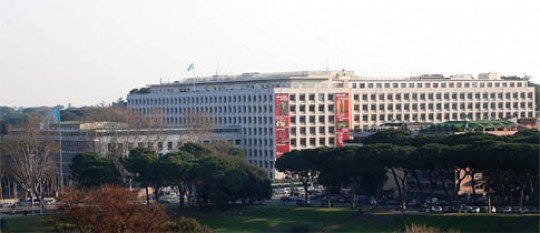
> UN Food and Agriculture Organization (FAO). FAO’s mandate
Achieving food security for all is at the heart of FAO’s efforts – to make sure people have regular access to enough high-quality food to lead active, healthy lives.
FAO’s mandate is to raise levels of nutrition, improve agricultural productivity, better the lives of rural populations and contribute to the growth of the world economy.
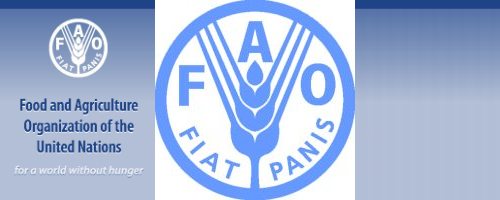
> UN Food and Agriculture Organization (FAO). FAO’s activities comprise four main areas:
Putting information within reach. FAO serves as a knowledge network. We use the expertise of our staff – agronomists, foresters, fisheries and livestock specialists, nutritionists, social scientists, economists, statisticians and other professionals – to collect, analyse and disseminate data that aid development. A million times a month, someone visits the FAO Internet site to consult a technical document or read about our work with farmers. We also publish hundreds of newsletters, reports and books, distribute several magazines, create numerous CD-ROMS and host dozens of electronic fora.
Sharing policy expertise. FAO lends its years of experience to member countries in devising agricultural policy, supporting planning, drafting effective legislation and creating national strategies to achieve rural development and hunger alleviation goals.
Providing a meeting place for nations. On any given day, dozens of policy-makers and experts from around the globe convene at headquarters or in our field offices to forge agreements on major food and agriculture issues. As a neutral forum, FAO provides the setting where rich and poor nations can come together to build common understanding.
Bringing knowledge to the field. Our breadth of knowledge is put to the test in thousands of field projects throughout the world. FAO mobilizes and manages millions of dollars provided by industrialized countries, development banks and other sources to make sure the projects achieve their goals. FAO provides the technical know-how and in a few cases is a limited source of funds. In crisis situations, we work side-by-side with the World Food Programme and other humanitarian agencies to protect rural livelihoods and help people rebuild their lives.

> UN Food and Agriculture Organization (FAO). Structure and finance.
Members
An intergovernmental organization, FAO has 191 Member Nations, two associate members and one member organization, the European Union.
Governance
Representatives of members meet at the biennial FAO Conference to review global governance policy issues and international frameworks, as well as to evaluate work carried out and to approve the budget for the next biennium. The Conference elects Council Members, to serve three-year rotating terms to carry out executive oversight of programme and budgetary activities. The Conference also elects a Director-General to a four year term of office, renewable once. The current Director-General, Dr Jacques Diouf of Senegal ends his third term on 31 December 2011. The newly elected Director-General, José Graziano da Silva will assume his functions on 1 January 2012 for a term which expires on 31 July 2015.
Departments
FAO is composed of seven departments: Agriculture and Consumer Protection; Economic and Social Development; Fisheries and Aquaculture; Forestry; Corporate Services, Human Resources and Finance; Natural Resources Management and Environment; and Technical Cooperation.
Offices
Besides its headquarters in Rome, FAO is present in over 130 countries. The decentralized network includes five regional offices, 11 subregional offices, two multidisciplinary teams, 74 fully fledged country offices (excluding those hosted in regional and subregional offices), eight offices with technical officers/FAO Representatives, and 36 countries covered through multiple accreditation. In addition, the Organization maintains five liaison offices and four information offices in developed countries.
Staff
As of 1 April 2011, FAO employed 1 835 professional staff (including Associate Professional Officers and National Professional Officers) and 1 856 support staff. Figures only refer to staff holding fixed term and continuing appointments. Approximately 53 percent are based at headquarters in Rome, while the remainder work in offices worldwide. During the last 15 years, the proportion of women in the professional staff category has more than doubled, from 16 percent to 34 percent.
Programmes and projects
In 2010, FAO implemented programmes and projects with a total value of US$903 million. About four percent are funded by assessed contributions through the FAO Technical Cooperation Programme (TCP) and the Special Programme for Food Security (SPFS). The remaining 96 percent are funded from voluntary contributions, through the Government Cooperative Programme (44 percent), Unilateral Trust Fund (UTF) (six percent), other forms of Trust Funds (46 percent), that include UN Joint Programmes.
Funding and expenditure
FAO’s overall programme of work is funded by assessed and voluntary contributions. The assessed contributions are member countries’ contributions, set at the biennial FAO Conference. The FAO regular budget for the 2010-2011 biennium is US$1 billion. The voluntary contributions provided by members and other partners support technical and emergency (including rehabilitation) assistance to governments, as well as direct support to FAO’s core work. The voluntary contributions are expected to exceed US$1.2 billion in 2010-11.

> UN Food and Agriculture Organization (FAO). FAO renewal forging ahead.
A comprehensive programme of organizational reform and culture change began in 2008. Headquarters restructuring and delegation of decision making has created a flatter more responsive structure and reduced costs. Modernizing and streamlining of administrative and operational processes are under way. Improved internal teamwork and closer external partnerships coupled with upgrading of IT infrastructure and greater autonomy of FAO’s decentralized offices allows the Organization to respond quickly where needs are greatest. As FAO is primarily a knowledge based organization, investing in human resources is a top priority. Capacity building including a leadership programme, employee rotation and a new junior professional programme has been established. Individual performance management, an ethics officer and an independent office of evaluation are designed to improve performance through learning and strengthened oversight.

> UN Food and Agriculture Organization (FAO). A short history of FAO.
2010
As the worst floods ever to hit Pakistan wiped out seed stores and killed millions of head of livestock, FAO responded with distribution of wheat seed to half a million farming families in time for the planting season. An additional 235 000 families received feed, medicine and shelter for their animals.
2010
A major communication campaign called “The 1billionhungry project” kicked off in May and reached millions of people worldwide using live events, television, internet, social media and outdoor advertising. The campaign’s anti-hunger petition gathered over three million signatures in its first six months.
2009
As the number of hungry reached 1.02 billion, FAO holds a World Summit on Food Security on 16-18 November to inject new urgency into the fight against hunger. Sixty heads of state and government and 192 ministers unanimously adopt a declaration pledging renewed commitment to eradicate hunger from the Earth at the earliest date
2008
FAO holds a high-level conference on 3–5 June on the impact of climate change and the biofuel boom on food security and food prices. Attended by 43 heads of state and 100 government ministers, the conference adopted a resolution to increase assistance and investment in developing world agriculture.
2007
All 119 countries at FAO’s Committee on Fisheries in Rome agree on a proposal to develop a legally binding measure to tackle illegal, unreported and unregulated fishing practices, which cause severe economic, social, biological and environmental damage.
2006
FAO unveils its high-tech Crisis Management Centre to fight bird flu and other animal health or food safety emergencies. The service monitors disease outbreaks and dispatches experts to any hot spot in the world in under 48 hours.
Representatives of 96 FAO member countries at the International Conference on Agrarian Reform and Rural Development, in Brazil, make a joint declaration recognizing the role of agrarian reform and rural development for sustainable development.
2005
The 60th anniversary of FAO’s founding celebrated in a solemn ceremony attended by Heads of State and Government, Ministers and other dignitaries from all regions of the world.
Director-General Jacques Diouf re-elected for a third six-year term. FAO Conference approves additional reforms including further decentralization of staff.
2004
FAO announces the entering into force of the International Treaty on Plant Genetic Resources for Food and Agriculture, an essential legally binding agreement that encourages sustainable agriculture through the equitable sharing of genetic material and its benefits among plant breeders, farmers and public and private research institutions.
2002
World Food Summit: five years later, attended by delegations from 179 countries plus the European Commission, reaffirms the international community’s commitment to reduce hunger by half by 2015.
2001
FAO Conference adopts the legally binding International Treaty on Plant Genetic Resources for Food and Agriculture, which supports the work of breeders and farmers everywhere.
2000
FAO develops a strategy for concerted government and UN agency action to combat chronic hunger in the Horn of Africa, at the request of the United Nations Secretary-General.
1999
FAO’s Committee on Fisheries adopts plans of action on fishing capacity, sharks and seabirds.
1998
An FAO-brokered legally binding convention to control trade in pesticides and other hazardous trade in chemicalsis adopted in Rotterdam.
1997
FAO launches campaign against hunger initiative TeleFood. TeleFood ’97 reaches a global audience of 500 million.
1996
FAO hosts 186 Heads of State or Government and other high officials at World Food Summit in November to discuss and combat world hunger.
1995
FAO celebrates its 50th birthday.
1994
FAO launches the Special Programme for Food Security (SPFS), targeting low-income food-deficit countries (LIFDCs).
The Emergency Prevention System for Transboundary Animal and Plant Pests and Diseases (EMPRES), strengthening the Organization’s existing contribution to prevention, control and, when possible, eradication of diseases and pests, is established.
FAO begins the most significant restructuring since its founding to decentralize operations, streamline procedures and reduce costs.
1991
International Plant Protection Convention is ratified with 92 signatories.
1986
AGROSTAT (now FAOSTAT), the world’s most comprehensive source of agricultural information and statistics, becomes operational.
1981
The first World Food Day observed on 16 October by more than 150 countries.
1980
FAO concludes 56 agreements for the appointment of FAO Representatives in developing member countries.
1978
The Eighth World Forestry Congress, held in Jakarta, Indonesia, with the theme “Forests for people”, has a profound impact on attitudes towards forestry development and FAO’s work in this sector.
1976
FAO’s Technical Cooperation Programme established to afford greater flexibility in responding to urgent situations.
1974
UN World Food Conference in Rome recommends the adoption of an International Undertaking on World Food Security.
1962
The FAO/WHO Codex Alimentarius Commission established to set international food standards becomes operational.
1960
Freedom from Hunger campaign launched to mobilize non-governmental support.
1951
FAO headquarters moved to Rome, Italy, from Washington, DC, the United States.
1945
First session of FAO Conference, Quebec City, Canada, establishes FAO as a specialized United Nations agency.
1943
Forty-four governments, meeting in Hot Springs, Virginia, the United States, commit themselves to founding a permanent organization for food and agriculture.

> UN Food and Agriculture Organization (FAO). Departments.
OFFICE OF THE DIRECTOR-GENERAL
Office of Evaluation
Office of the Inspector-General
Legal Office
Ethics Office
Office of Corporate Communications and External Relations
Office of Strategy, Planning and Resources Management
AGRICULTURE AND CONSUMER PROTECTION DEPARTMENT
Animal Production and Health Division
Nutrition and Consumer Protection Division
Plant Production and Protection Division
Rural Infrastructure and Agro-Industries Division
Joint FAO/IAEA Division of Nuclear Techniques in Food and Agriculture
ECONOMIC AND SOCIAL DEVELOPMENT DEPARTMENT
Agricultural Development Economics Division
Statistics Division
Trade and Markets Division
Gender, Equity and Rural Employment Division
FISHERIES AND AQUACULTURE DEPARTMENT
Fisheries and Aquaculture Policy and Economics Division
Fisheries and Aquaculture Resources Use and Conservation Division
FORESTRY DEPARTMENT
Forest Economics, Policy and Products Division
Forest Assessment, Management and Conservation Division
NATURAL RESOURCES MANAGEMENT AND ENVIRONMENT DEPARTMENT
Climate, Energy and Tenure Division
Land and Water Division
TECHNICAL COOPERATION DEPARTMENT
Policy and Programme Development Support Division
Emergency Operations and Rehabilitation Division
Investment Centre Division
CORPORATE SERVICES, HUMAN RESOURCES AND FINANCE DEPARTMENT
Shared Services Centre
Human Resources Management Division
Finance Division
Conference, Council,and Protocol Affairs Division
Administrative Services Division
OFFICE OF THE DEPUTY DIRECTOR-GENERAL: Knowledge
Office of Knowledge Exchange, Research and Extension
OFFICE OF THE DEPUTY DIRECTOR-GENERAL: Operations
Chief Information Officer Division
Office of Support to Decentralisation

> UN Food and Agriculture Organization (FAO). Director-General.
The Conference of member nations, FAO’s governing body, elects the Director-General to head the agency.
The current Director-General, Dr Jacques Diouf of Senegal, was elected on 8 November 1993 and began his first six-year term in January 1994. After completing a second term, Dr Diouf was re-elected to a third six-year term, which began in January 2006.
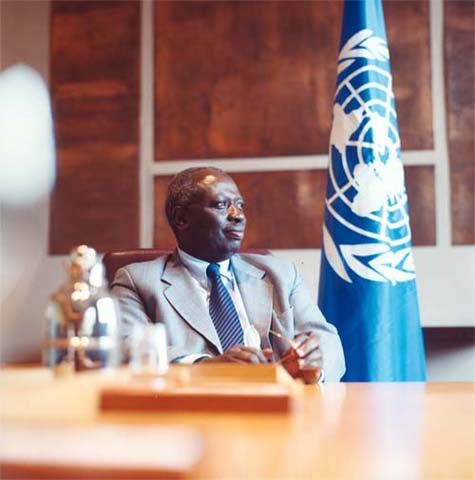
Dr Jacques Diouf, Director-General Food and Agriculture Organization of the United Nations (FAO) ©FAO/Simone Casetta
JACQUES DIOUF . Bio.
Dr Diouf started his career following completion of his studies: Bachelor of Science in Agriculture from the Ecole nationale d’agriculture, Grignon-Paris (France), Master of Science in Tropical Agronomy from the Ecole nationale d’application d’agronomie tropicale, Nogent-Paris (France), Doctor of Philosophy in Social Sciences of the Rural Sector (Agricultural Economics) from the Faculté de droit et de sciences économiques, Panthéon – Sorbonne, Paris (France).
From 1963, Dr Diouf has held several positions of responsibility in national and international agricultural institutions: Director of the European Office and the Agricultural Programme of the Marketing Board (Paris/Dakar); Executive Secretary of the African Groundnut Council in Nigeria; Executive Secretary of the West Africa Rice Development Association in Liberia and Adviser to the President and Regional Director of the International Development Research Centre, Ottawa (Canada).
His expertise was put at the service of the executive and legislative branches of the Senegalese Government as Secretary of State for Science and Technology in the Cabinet and Member of Parliament; Chairperson of the Foreign Relations Committee and Secretary–elect, Dakar (Senegal); Ambassador, Permanent Mission of the Republic of Senegal to the United Nations, New York (USA).
He also served as Secretary-General and Special Adviser to the Governor of the Central Bank for West African States, Dakar (Senegal).
On 8 November 1993, Dr Diouf was elected Director-General of FAO and he is currently serving in this position for a third mandate.
He sat on the boards of a number of international institutions and produced several scientific publications. He has received numerous high awards from governments around the world and various academic recognitions

> UN Food and Agriculture Organization (FAO). Employment in FAO.
Human resources are the essence of FAO. FAO employs more than 3 600 staff members – approximately 1600 professional and 2 000 general service staff – and currently maintains five regional offices, ten subregional offices, six liaison offices and 74 full-fledged country offices (excluding those hosted in Regional and Subregional Offices), in addition to its headquarters in Rome.

> UN Food and Agriculture Organization (FAO). Part of the United Nations family
The United Nations is a family of organizations. Also known as the United Nations system, it is made up of the United Nations Secretariat, the United Nations programmes and funds, and the UN specialized agencies. The programmes, funds and agencies have their own governing bodies and budgets, and set their own standards and guidelines. Together, they provide technical assistance and other forms of practical help in virtually all areas of economic and social endeavour.
FAO is a United Nations specialized agency, accountable to the FAO Conference of member governments. FAO participates in the United Nations Economic and Social Council (ECOSOC) which coordinates economic, social and related work of the 14 UN specialized agencies as well as regional commissions.
The Director-General of FAO is a member of the Chief Executives Board (CEB), which brings together on a regular basis the executive heads of the organizations of the United Nations system, under the chairmanship of the Secretary-General of the United Nations. The CEB is the prime instrument for supporting and reinforcing the coordinating role of United Nations intergovernmental bodies on social, economic and related matters. The CEB aligns the strengths of a decentralized system of specialized organizations into a cohesive and functioning whole. It ensures that the UN system delivers as one at the global, regional and country levels on the broad range of commitments made by the international community.
>> Meeting the ”One UN” challenge.
The UN launched the Delivering as One initiative in 2007. It aims to reduce fragmentation and harness the full capacity of the UN system in support of development at global, regional and country level.
Delivering as One is a pilot programme that elaborates an approach characterized by four principles:
• One programme
• One budget
• One leader
• One set of management systems
It recognises that each country is unique and that the approach must be adapted to the situation and needs of each individual country.
Eight countries volunteered to become Delivering as One test pilots: Albania, Cape Verde, Mozambique, Pakistan, Rwanda, Tanzania, Uruguay and Viet Nam. The pilot countries agreed to work with the UN system to capitalize on the strengths and comparative advantages of the different members of the UN family. Together they are experimenting with ways to increase the UN system’s impact through more coherent programmes, reduced transaction costs for governments, and lower overhead costs for the UN system.
Over the coming years, around 90 countries could adopt the approach tested in the Delivering as One pilots.
The UN Development Group (UNDG) supports the Delivering as One approach at the country level. The UNDG unites the 32 UN funds, programmes, agencies, departments, and offices that play a role in development. Their common objective is to deliver more coherent, effective and efficient support to countries seeking to attain internationally agreed development goals, including the Millennium Development Goals.
For more information about Delivering as One, visit the United Nations Development Group website.
>> Collaboration among the Rome-based UN agencies.
The Food and Agriculture Organization of the United Nations (FAO), the International Fund for Agricultural Development (IFAD) and the World Food Programme (WFP) collaborate in many ways to further the global community’s goal of eliminating hunger and poverty.
Global challenges of climate change and the food security crisis have provided new impetus for increased cooperation among the UN food agencies based in Rome: FAO, IFAD and WFP.
The three agencies have approved a new strategy for collaboration that identifies areas for future collaboration in the medium-term:
• analytical and policy support for governments and national development plans including rural development strategies;
• the food crisis and implementation of the Comprehensive Framework for Action (CFA);
• climate change and its links to natural resources management; and
• transition from relief to development.
By drawing on the special strengths and areas of expertise of each agency, FAO, IFAD and WFP collectively work to ensure food security and sustainable agricultural development in the longer term. The three agencies collaborate with a common vision to address world food security on the basis of the “twin track approach” to alleviating hunger through food assistance, nutrition support measures and social safety nets; and eliminating the root causes of hunger and poverty through long-term support to agricultural development and smallholder farmers.
>> Partnerships in action
UN-REDD Programme
The UN-REDD Programme is a collaborative partnership between FAO, UNDP and UNEP launched in September 2008 that supports countries to develop capacity to Reduce Emissions from Deforestation and forest Degradation (REDD) and implement a future REDD + mechanism. It builds on the convening power of its participating UN agencies, their diverse expertise and vast networks, and “delivers as One UN”.
The UN-REDD Programme works at both the national and global scale, through support mechanisms for country-driven REDD strategies and international consensus-building on REDD processes.
UN REDD programme
…
…
The UN-REDD Programme in Action video highlights the activities and value of the UN-REDD Programme at the national and global level, and includes interviews with representatives of the Programme, pilot and partner countries, donors and other REDD+ experts.
…
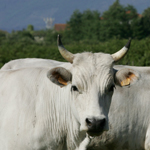
Deadly cattle plague eradicated
During 2011, FAO, with OIE and other partners, will officially declare one of the most devastating animal diseases known, rinderpest, as eradicated. It will be the first time in history that humankind has succeeded in killing off an animal disease.

> UN Food and Agriculture Organization (FAO). FAO partnerships.
Partnerships that make a difference
In a world where around 1 billion people are chronically deprived of adequate food, no single individual, organization or sector can solve the problem. Only by sharing knowledge, pooling resources and working together will humanity bring an end to hunger.
FAO works in partnership with institutions of all kinds – private foundations, grassroots organizations, companies, professional associations, other United Nations agencies, national governments and more. Some partnerships operate at national level or in the field, others are regional or global in nature. FAO works in partnership with others on food security, natural resource management, forestry and fisheries, early warning of food emergencies, disaster recovery, food safety, bioenergy and many other areas.
>> Academic and research institutions
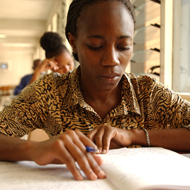 Anti-hunger policies must be based on sound scientific research and analysis. For this reason, the academic community has a central role to play in eradicating hunger.
Anti-hunger policies must be based on sound scientific research and analysis. For this reason, the academic community has a central role to play in eradicating hunger.
FAO has a long history of working with academic and research institutions. The visiting experts programme, provided a framework for established scholars and researchers to contribute their energies to issues related to hunger and food security. During the course of this programme around 70 countries and seven international institutions carried out over 600 assignments.
Sharing knowledge and expertise
Technical experts in developing countries and countries in transition have a wealth of knowledge about how to deal with the challenges of rural development. Using and sharing this expertise through practical projects is essential for combating hunger worldwide.
Technical experts involved in these programmes may be employees of governments, the private sector, research institutions or non-governmental organizations. These hands-on projects bring tangible results in the field. Over the last few years over 2700 assignments, covering a wide range of FAO activities, have been carried out with the involvement of these experts.
>>> Academic and research partnership activities
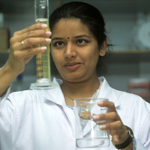
International agricultural research
The Consultative Group on International Agricultural Research (CGIAR), established in 1971, is a strategic partnership of diverse donors that support 15 international Centers, working in collaboration with many hundreds of government and civil society organizations as well as private businesses around the world.
The Information Management Resource Kit (IMARK) is a partnership-based e-learning initiative to train individuals and support institutions and networks world-wide in the effective management of agricultural information. IMARK consists of a suite of distance learning resources, tools and communities on information management.
The Global Forum on Food Security and Nutrition is an online community whose members can share their knowledge and experience. Through interaction, the network finds solutions to issues related to food security and nutrition policies and strategies. It hosts discussions, welcomes queries, invites requests for peer assistance and is driven by the needs of participants.
The FAO programme, and similar initiatives by partner organizations, have demonstrated how horticulture helps empower the urban poor, and contributes to their food security and nutrition. But it can also help grow greener cities that are better able to cope with social and environmental challenges, from slum improvement and management of urban wastes to job creation and community development.
>> Civil Society
Partnerships with civil society organizations
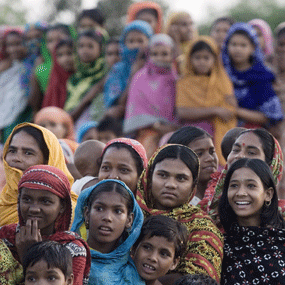 The Food and Agriculture Organization of the United Nations (FAO) has a long history of collaboration with Civil Society Organizations (CSOs) at the local, regional and global levels. As part of its partnership strategy, FAO works closely with federations and associations of farmers, fisher folk, herders, pastoralists, women, youth and indigenous peoples, and NGOs. These partnerships are imperative to the effectiveness and quality of work in agriculture, as these partners have the closest and most frequent access to the food insecure.
The Food and Agriculture Organization of the United Nations (FAO) has a long history of collaboration with Civil Society Organizations (CSOs) at the local, regional and global levels. As part of its partnership strategy, FAO works closely with federations and associations of farmers, fisher folk, herders, pastoralists, women, youth and indigenous peoples, and NGOs. These partnerships are imperative to the effectiveness and quality of work in agriculture, as these partners have the closest and most frequent access to the food insecure.
FAO is committed to involving stakeholders at all levels, to ensure that they have a voice in global governance structures and are actively engaged in policy application at the field level. FAO recognizes that civil society plays a critical role in the fight against hunger, and in doing so, appeals to their technical expertise and support on a variety of issues related to food security.
FAO works closely with federations, associations and groups representing farmers, fishers, forest users, herders, indigenous peoples, women and youth to help ensure that the aspirations of the poor, marginalized and the hungry are voiced.
• Women and youth organizations
• Non-governmental organizations (NGO)
• Social/peoples movements
• Labour unions
• Indigenous peoples’ organizations
• Charitable organizations
• Faith-based organizations
• Professional associations and foundations
>>> About
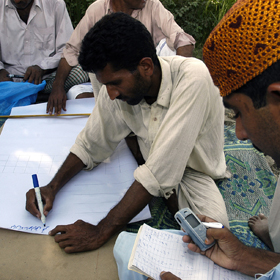 FAO works closely with federations, associations and groups representing farmers, fishers, forest users, herders, indigenous peoples, women and youth to help ensure that the aspirations of the poor, the disadvantaged, the marginalized and the hungry are successfully voiced.
FAO works closely with federations, associations and groups representing farmers, fishers, forest users, herders, indigenous peoples, women and youth to help ensure that the aspirations of the poor, the disadvantaged, the marginalized and the hungry are successfully voiced.
Non-governmental organizations (NGOs) and civil society organizations (CSOs) work with FAO in technical areas such as sustainable agriculture, gender and environment; in institutional areas such as representation and legislation; and in capacity building, advocacy and technical support for agriculture, fisheries and forestry.
Dialogue and consultation with CSOs help FAO ensure that its decision making, policies and scientific research reflect the interests of all sectors of society.
>>> Background
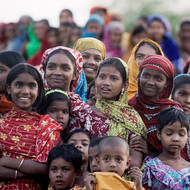 FAO’s history of working with International Non-Governmental Organizations (INGOs) began shortly after its creation in the late 1940s, but the organization has greatly strengthened its overall collaboration with CSOs since the Freedom from Hunger Campaign (FFHC) from the 1960s to the early 1980s. The FFHC promoted national non-governmental platforms, regional alliances and international networks concerned with food and agriculture. Some of these platforms have endured at national and global levels.
FAO’s history of working with International Non-Governmental Organizations (INGOs) began shortly after its creation in the late 1940s, but the organization has greatly strengthened its overall collaboration with CSOs since the Freedom from Hunger Campaign (FFHC) from the 1960s to the early 1980s. The FFHC promoted national non-governmental platforms, regional alliances and international networks concerned with food and agriculture. Some of these platforms have endured at national and global levels.
Renewed commitment
The World Food Summit in 1996 brought renewed energy to FAO’s outreach to civil society, with CSOs playing a prominent role therein. About 500 organizations attended the Summit, while a parallel non-governmental organization (NGO) Forum brought together 1 300 representatives from 80 countries. Similar pre-summit events have been organized for the World Food Summit: Five Years later in 2002 and more recently the World Summit on Food Security in 2009.
Increased international recognition
These consultations stimulated national, regional and global networking on food security issues, which has continued as an essential element of the follow-up to the World Summit on Food Security. Concepts and initiatives first articulated for a general audience at the NGO Forum – such as food sovereignty and the right to food – have progressively gained international recognition. These developments complemented changes in the UN system as a whole, which has moved towards more inclusive consideration of non-state actors in global governance.
>>> Partnerships in action
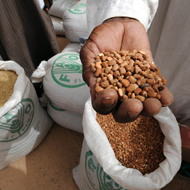 Influencing policy
Influencing policy
FAO provides a neutral space for negotiating government commitments.
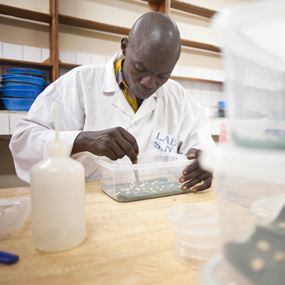 Technical expertise
Technical expertise
FAO provides technical knowledge which can be used by civil society to influence agricultural policies, the right to food and human rights.
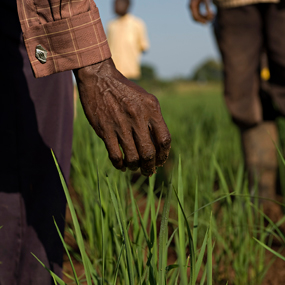 Field activities
Field activities
FAO provides technical support and expertise for designing projects, from emergency interventions to rehabilitation and long-term operations, locally and regionally
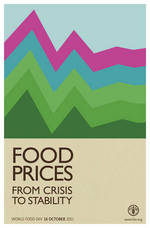 World Food Day 2011
World Food Day 2011
Food prices – from crisis to stability
Price swings, upswings in particular, represent a major threat to food security in developing countries. Hardest-hit are the poor. According to the World Bank, in 2010-2011 rising food costs pushed nearly 70 million people into extreme poverty.
“FOOD PRICES – FROM CRISIS TO STABILITY” has been chosen as this year’s World Food Day theme to shed some light on this trend and what can be done to mitigate its impact on the most vulnerable.
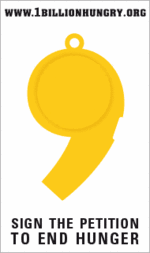
”The 1billionhungry project” is targeting at least one million signatures on a petition urging national and international leaders to move hunger to the top of the political agenda.
It is a viral campaign that taps into the power of the internet and social media. FAO has worked with its partners across various countries – for example, staff in Bangladesh teamed up with the Bangladesh Rural Advancement Committee, an NGO, as a means to help raise awareness of the campaign.
>>> How to get involved
FAO is constantly looking to expand its partnership activities with organizations that align themselves with FAO’s mandate and can offer their expertise and knowledge in support of programme activities.
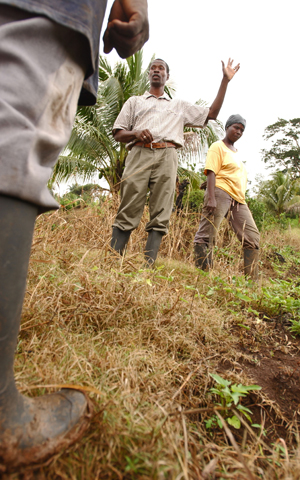 CSOs and NGOs interested in developing partnerships with FAO can contact the decentralized offices at the country, sub-regional or regional levels, relevant technical divisions, and FAO’s partnership division in Rome.
CSOs and NGOs interested in developing partnerships with FAO can contact the decentralized offices at the country, sub-regional or regional levels, relevant technical divisions, and FAO’s partnership division in Rome.
CSOs and NGOs should share the following principles to partner with FAO:
Congruence with FAO’s mandate
Partnership activities must be consistent with FAO’s mandate and enhance the effectiveness of its work. FAO will not enter into partnership with organizations whose programmes are contrary to the Organization’s mandate.
Mutual interests and objectives
Partnership activities will focus on areas and subjects of mutual interest to FAO and CSOs.
Transparency
Partnership activities will be transparent and information on them will be made publicly available.
Accountability
Partnership activities will be designed and implemented in a manner that ensures clear and agreed responsibilities and accountability by all partners.
>>>> Benefits of partnering with FAO
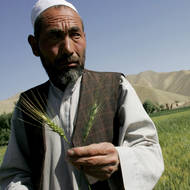 Collaboration with civil society organizations legitimizes, broadens and enhances the scope of FAO’s work. Conversely, FAO’s efforts are geared to empower civil society and bridge the gap with national governments, the international community, donors and other United Nations agencies. It is a mutually beneficial partnership, which strives toward a common goal: to defeat world hunger and malnutrition.
Collaboration with civil society organizations legitimizes, broadens and enhances the scope of FAO’s work. Conversely, FAO’s efforts are geared to empower civil society and bridge the gap with national governments, the international community, donors and other United Nations agencies. It is a mutually beneficial partnership, which strives toward a common goal: to defeat world hunger and malnutrition.
FAO believes that strengthened cooperation with civil society:
• enhances the legitimacy, transparency and equity of policy- and decision-making, ensuring that it takes into consideration the interests of all sectors of society and has their support
• gives a voice to stakeholders particularly the world’s poor and ensures that their views and opinions are taken into account
• offers substantive contributions to FAO’s activities
• increases the effectiveness of FAO field projects and programmes by building on civil society experience in participatory approaches, poverty alleviation and sustainable agriculture, as well as their capacity to act quickly and flexibly targeting the most vulnerable groups
• builds public support and political will to attain food security objectives
• makes FAO’s work better known to a wider public
Cooperation with FAO can provide civil society:
• technical and institutional support
• promotion and scaling-up of successful approaches developed by and beneficial to the poor
• improvements in access to and sharing of information
• increased access to government officials and decision-makers
• greater influence on public policy, service delivery, finances and human resources development
• improved mobilization of resources for food security
>>>> Formal status
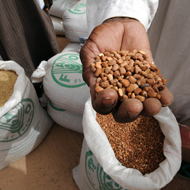 Over 200 international non-governmental organizations (INGOs) have formal status with FAO. Through an official process of application and approval, this gives them mandated participation in FAO Governing Bodies and technical committees as observers. Their presence is important to ensure the overall governance of FAO in terms of transparency, and for building relations between FAO member countries and civil society.
Over 200 international non-governmental organizations (INGOs) have formal status with FAO. Through an official process of application and approval, this gives them mandated participation in FAO Governing Bodies and technical committees as observers. Their presence is important to ensure the overall governance of FAO in terms of transparency, and for building relations between FAO member countries and civil society.
Formal status is not a prerequisite for partnership with FAO.In the field, FAO works with CSOs, particularly farmers, fishers and herders groups, to ensure that its projects and programmes have a real impact on local communities. CSOs also collaborate with FAO in normative activities, sharing information and raising awareness at national, regional and global levels. Finally, civil society attendance of FAO committees, commissions, technical meetings and regional conferences does not depend on application for or granting of formal status. For example, the Committee on World Food Security (CFS) mobilizes wide interest and participation of CSOs without formal status.
FAO recognizes three types of formal status
Consultative Status
Applying to organizations concerned with matters covering a substantial part of FAO’s field of activity.
Liaison Status
Applying to organizations concerned with matters covering a part of FAO’s field of activity and in a position to give practical assistance in that field.
Specialized Consultative Status
Applying to organizations concerned with matters covering a particular part of FAO’s field of activity.
>>>> How to become a partner
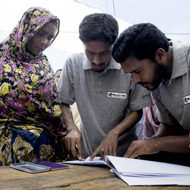 FAO is constantly looking to expand its partnership activities with organizations that align themselves with FAO’s mandate and can offer their expertise and knowledge in support of programme activities.
FAO is constantly looking to expand its partnership activities with organizations that align themselves with FAO’s mandate and can offer their expertise and knowledge in support of programme activities.
CSOs interested in developing partnerships with FAO can contact the decentralized offices directly at the country, sub-regional or regional levels, and FAO’s partnership branch in Rome (see contact us page).
How can an INGO get Formal Status with FAO?
Before establishing formal relations with an INGO, the organization should have cooperated with FAO at the technical level over an extended period of time (normally interpreted as at least two years). The organization must also be international in scope and governance structure. After cooperation has been established and conducted with relevant technical unit(s) or field offices application for formal relations can begin.
Requests for the establishment of “formal status” shall be forwarded to the partnerships branch, which will coordinate internal procedures. Technical units with which the NGO has been cooperating have to substantiate the request.
Application questionnaire
If the INGO meets established criteria, it should fill out this questionnaire and return it via email to FAO-CivilSociety@fao.org with any additional information that may help us appraise the request.
If the organization does not meet the criteria, or if it has not cooperated with FAO over an extended period of time, this does not preclude or limit in any way its possibility to establish and/or enhance its collaboration with FAO or to participate in FAO technical meetings.

> UN Food and Agriculture Organization (FAO). FAO Governing and Statutory Bodies.
Structured compilation of data on Bodies established by the Organization in two sections:
Section I – Governing Bodies
Section II – Statutory Bodies and Subsidiary Bodies
The site aims to be an institutional point of reference for all FAO Bodies as well as being an instrument to understand the governance of the Organization
Governing Bodies
- Conference
- Council
- Programme Committee
- Finance Committee
- Committee on Constitutional and Legal Matters
- Committee on Commodity Problems
- Committee on Fisheries
- Committee on Forestry
- Committee on Agriculture
- Committee on World Food Security
- Regional Conferences
Statutory Bodies by subject matter
- Agriculture
- Animal Production and Health
- Commodities and Trade
- Fisheries
- Food Policy and Nutrition
- Forestry
- Genetic Resources for Food and Agriculture
- Land and Water Development
- Plant Production and Protection
- Statistics

> UN Food and Agriculture Organization (FAO). Office of the Inspector General.
The Office of the Inspector General provides oversight of the programmes and operations of the Organization, through internal audit and investigation.
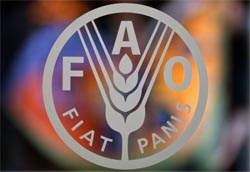 The Office of the Inspector General has responsibility for monitoring and evaluating the adequacy and effectiveness of the Organization’s system of internal control, financial management and use of assets. The Office provides the Director-General and the functions and programmes audited with independent, objective assurance and consulting services designed to add value and improve the Organization’s operations. It helps the Organization accomplish its objectives by bringing a systematic, disciplined approach to evaluate and improve the effectiveness of risk management, control, and governance processes.
The Office of the Inspector General has responsibility for monitoring and evaluating the adequacy and effectiveness of the Organization’s system of internal control, financial management and use of assets. The Office provides the Director-General and the functions and programmes audited with independent, objective assurance and consulting services designed to add value and improve the Organization’s operations. It helps the Organization accomplish its objectives by bringing a systematic, disciplined approach to evaluate and improve the effectiveness of risk management, control, and governance processes.
The investigation unit of the Office of the Inspector General investigates allegations of fraud and misconduct in the programmes and operations of the Organization. The Office reports to the Director-General and Senior Management on lessons learned, and promotes policies and activities that enhance the integrity of FAO’s operations.
>> About the Office of the Inspector General
The Office of the Inspector-General is charged with providing independent objective advice and assurance on whether the outputs of the Organization are produced with due regard to economy, efficiency and effectiveness. With FAO’s overriding mandate of ensuring humanity’s freedom from hunger, it is imperative that all resources allocated to this end, both human and financial, are used with care and not diverted from their ultimate purpose.
The Office was given its current mandate via the Charter for the Office of the Inspector-General in 2000. The Charter sets out the mission and scope of the Inspector-General’s work, defines its accountability and authority, and ensures its independence.
The Office has both an Audit Unit and Investigative Unit. The Audit Unit conducts audits and provides advisory and consulting services to senior management to ensure FAO’s system of internal control, financial management and use of assets is adequate and effective. It also helps the Organization accomplish its objectives by bringing a systematic, disciplined approach to evaluate and improve the effectiveness of risk management, control, and internal governance processes. It conducts its work in accordance with the Code of Ethics and International Standards for the Professional Practice of Internal Auditing published by the Institute of Internal Auditors (IIA) .
The Office of the Inspector-General is guided by a Code of Ethics developed by the Institute of Internal Auditors (IIA). In addition, it follows the standards of the IIA and provides the training and support necessary for staff to stay current with the state of the art of internal auditing.
The Investigation Unit conducts investigations in compliance with the Guidelines for Internal Administrative Investigations by the Office of the Inspector General adopted by FAO. These are based on the Uniform Guidelines for Investigations adopted and endorsed by the Conference of International Investigators, comprising professionals from international organizations, including UN organizations and International Financial Institutions.
>> Activities
The Office of the Inspector General conducts both internal audits and investigations to provide comprehensive internal oversight at all levels of the organization. Additionally,
- Internal audit serves as an ongoing tool for improving FAO’s operations. Auditors follow a scheduled biennial audit plan, determined according to accepted methods of risk assessment, combined with cumulative institutional knowledge and analysis of policy directions from the Governing Bodies, and they also respond to audit needs identified during the course of scheduled audits. In addition, auditors respond to emerging needs such as requests from senior management for reviews of specific activities.
- Investigations are conducted pursuant to the receipt of specific complaints of wrongdoing, or the identification of indicators of potential wrongdoing during the course of an audit or other activity. The investigations unit is responsible for reviewing allegations of misconduct, fraud and other improper activities. The investigative findings are then submitted to the appropriate unit for decision. The investigations unit also recommends actions to prevent future violations of FAO policies prohibiting fraud and misconduct with respect to staff members or third parties.
- Advisory and Consulting Services provide operating units with independent analysis, review, and recommendations for new and continuing processes that management request. The nature and scope of consulting services are agreed with the concerned managers. While the scope of consulting engagements is often narrower than audits, the same standards of independence, objectivity, and due professional care are applied.
- General Information The Office shares its Annual Report to the Director General with the FAO Finance Committee, and this is also made public on this website. In addition to the Annual Activity Report, the Office issues quarterly activity reports to the Director-General and Audit Committee. The Office also monitors management’s efforts to implement the audit recommendations by conducting a six monthly follow-up exercise and the results are reported to the Director General and Audit Committee.
Ongoing internal audits and investigations provide the opportunity for the Inspector General to recommend means of improving the efficiency and economy of operations and the effective use of the Organization’s resources. Internal audits and investigations conducted worldwide have covered aspects of financial management, budgeting, procurement and the establishment or enhancement of policies and guidelines in human resources, IT and security areas in order to improve accountability and strengthen and enforce internal controls, as well as a number of other areas.
Implementation of recommendations is followed up every six months and reported to the Director General and Audit Committee.
All work undertaken by the Office is complementary to that of the External Auditor and the Evaluation Service (OED). In addition, the work is conducted in collaboration with the External Auditor, the Legal Office and OED, as appropriate.

> UN Food and Agriculture Organization (FAO). FAO Procurement.
The Food and Agriculture Organization of the United Nations (FAO), founded in 1945, is one of the largest specialized agencies of the UN. The main goal of FAO procurement is to efficiently support FAO’s mandate of achieving a food-secure world by raising levels of nutrition, improving agricultural productivity, bettering the lives of rural populations and contributing to the growth of the world economy. As such, the primary focus of FAO procurement is in the areas of agricultural, forestry and fishery products and machinery, as well as services related to technical studies, construction and information dissemination activities.
FAO procurement is generally undertaken on the basis of competition and is based on the fundamental principles of Best Value for Money, fairness, transparency, economy and effectiveness. Additional objectives of FAO procurement are to:
- Promote standardization and the use of Framework Agreements, when appropriate, to maximize efficient use of resources;
- Give due consideration to the importance of attaining an equitable international distribution of procurement sources while encouraging developing and emerging economies and supporting capacity building in beneficiary countries, particularly in emergency and post-emergency rehabilitative situations;
- Favour cooperation with other entities of the United Nations system, when appropriate; and
- Promote a competitive market by favouring procurement from the private sector over procurement from government entities, government controlled enterprises or Vendors receiving government subsidies, except when the latter is the only viable option or would result in substantial benefit to the Organization or to the beneficiaries of its technical cooperation activities.
The Procurement Service (CSAP) located at FAO Headquarters in Rome, Italy has overall responsibility for FAO procurement. CSAP falls under the general responsibility of the Director, Administrative Services Division (Corporate Services Department) and the direct supervision of the Chief, CSAP.
FAO locations outside of Headquarters including Regional, Sub-Regional and Liaison offices and FAO Representations (Non-HQ Locations) also exercise authority to procure goods, works and services within specified limits which are USD 100,000 for FAO Liaison Offices and Representation Offices, USD 150,000 for Sub-Regional Offices and USD 200,000 for Regional Offices. Procurement actions in excess of the authority delegated to Non-HQ Locations are handled by CSAP.
>> Doing Business with FAO
To fight hunger across the world, FAO relies on a strong supply chain consisting of international network of reliable and reputable Vendors. Annually, FAO procures more than USD 150 million of goods, works and services from Vendors globally. Within any given project, there can be multiple business opportunities for interested and able Vendors.
 FAO acquires goods, works and services on the basis of a formal contract award procedure generally following a competitive procurement process. Participation to the solicitation process is based on invitation to registered, pre-selected Vendors.
FAO acquires goods, works and services on the basis of a formal contract award procedure generally following a competitive procurement process. Participation to the solicitation process is based on invitation to registered, pre-selected Vendors.
To do business with FAO, a Vendor must be registered using the UN Global Marketplace (UNGM), Vendor registration portal. Details of the Vendor registration process can be found by on the Vendor Registration page.
Submitting a completed application through the UNGM does not mean that a Vendor will automatically be invited to tender. Invitation will depend on a company’s experience, its ability to perform, financial soundness as well as the relevance of the goods, works or services offered.
All firms working with FAO must accept and abide by the FAO General Terms & Conditions applicable to the procurement of goods and/or services. In doing so, the firm also agrees to abide by the UN Supplier Code of Conduct, and that the firm and all sub-contractors will provide reasonable access to the premises to conduct on-site evaluations and inspections as required.
Depending on the value of the procurement action, methods of solicitation may include:
- Very Low Value Procurement (under USD 1,000 for HQ and USD 500 for Field Offices)
- Request for Quotation (RFQ) (under USD 5,000)
- Request for Proposal (RFP)
- Invitation to Bid (ITB)
Tips for doing business with FAO:
- Register your company using UNGM.
- Keep information about your company and its products and/or services updated.
- Prepare Responsive Offers that meet the requirements in the call for tenders.
- Strictly comply with the tender closing deadlines.
- Keep trying, even if you do not succeed on the first try.
>> Ethics Code of Conduct
The UN Supplier Code of Conduct is available for all Vendors that desire to do business, or who are already doing business with FAO. The Code of Conduct is enforced as part of an Organization-wide ethics framework.
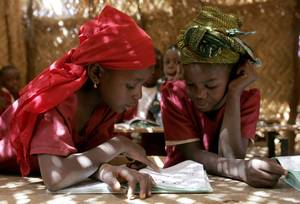 FAO, in accordance with the policy of UN agencies participating in the UN Global Marketplace, strictly enforces a zero tolerance approach to unethical, unprofessional or fraudulent actions by UN Vendors. Accordingly, any registered Vendor that is proven to have engaged in unethical, unprofessional or fraudulent activities will be suspended or forbidden from having business relations with FAO.
FAO, in accordance with the policy of UN agencies participating in the UN Global Marketplace, strictly enforces a zero tolerance approach to unethical, unprofessional or fraudulent actions by UN Vendors. Accordingly, any registered Vendor that is proven to have engaged in unethical, unprofessional or fraudulent activities will be suspended or forbidden from having business relations with FAO.
In addition, FAO has implemented a strict “No-gifts, no-hospitality” policy which is applicable to all Vendors. FAO personnel involved in the procurement process may not accept gifts or hospitality from current or potential Vendors. Vendors wishing to do business with FAO can not offer gifts or hospitality to any FAO staff member.
>> Vendor Registration.
FAO has recently launched a new Vendor registration system which is accessible through the Internet and interfaced with the United Nations Global Marketplace (UNGM). This database is the primary source for FAO to identify Vendors to be invited to tender. Please, refer to the instructions on how to register with UNGM.
The Vendor must carefully identify the products or services it supplies and accurately indicate them during the registration process. This will ensure that your organization is correctly classified for invitation to tenders that are relevant to your business.
Submitting a completed application through the UNGM does not guarantee that a Vendor will be invited to tender. Such invitation will depend on FAO’s evaluation of a company’s experience, its ability to supply/perform, financial soundness as well as the relevance of the goods or services offered.
FAO, in accordance with the policy of UN agencies participating in the UN Global Marketplace, strictly enforces a zero tolerance approach to unethical, unprofessional or fraudulent actions of UN Vendors. Accordingly, any registered Vendor that is found to have engaged in unethical, unprofessional or fraudulent activities will be suspended or forbidden from having business relations with FAO.
In addition, FAO has implemented a strict “No-gifts, no-hospitality” policy which is applicable to all vendors. FAO personnel involved in the procurement process may not accept gifts or hospitality from current or potential Vendors. Vendors wishing to do business with FAO can not offer gifts or hospitality to any FAO staff member.
For any question relating to Vendors please contact FAO-Vendor-Management@fao.org
>> Frequently procured Goods and Services.
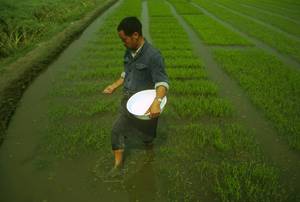 FAO procures a large variety of goods, works and services to support Organization’s mandate to fight world hunger.
FAO procures a large variety of goods, works and services to support Organization’s mandate to fight world hunger.
The most frequently procured goods include:
- Basic Chemicals (fertilizers and pesticides)
- Agricultural produce (seeds, crop, vegetable, seedlings, plantlets)
- Special purpose machinery (agricultural machinery, tractors, spraying devices, irrigation equipment)
- Transport equipment
- Office and IT equipment
- Medical appliances, precision and optical instruments (laboratory equipment)
- Veterinary pharmaceutical products and vaccines
- Grain mill products / starches and starch products (fish food, feed for livestock and poultry)
- Chemical products, man-made fibres, rubber and plastics
- Live animals and animal products
- Fabricated metal products, machinery & equipment (small agricultural implements, hoes, picks, etc.)
Commonly procured services include:
- Repair and maintenance services
- Information technology
- Transportation, storage and materials handling
- Communications
- Architecture, engineering, construction and other technical services
- Trade services, business services, surveys and studies
- Training
- Insurance

> UN Food and Agriculture Organization (FAO). Resource mobilization.

Food security for all is at the heart of FAO’s efforts, but this goal can only be achieved with the support of its partners. At a time when new pressures are threatening the poor, from volatile food prices to global warming, effective partnership and strategically-targeted development assistance are more important than ever.
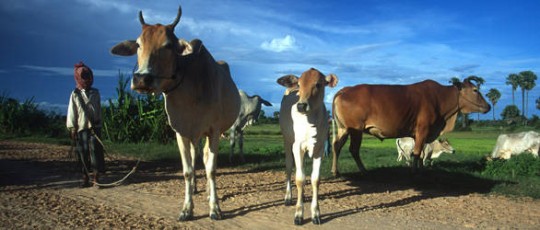
Engaging resource partners at global, regional and country levelEffectively managing resourcesMaking a difference at country level
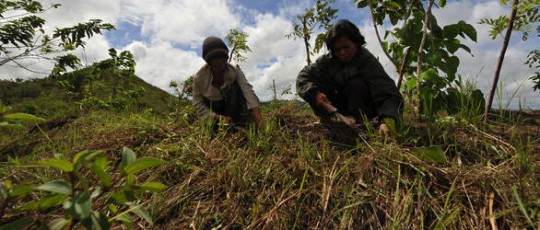
Supporting Members’ priorities with FAO’s expertise
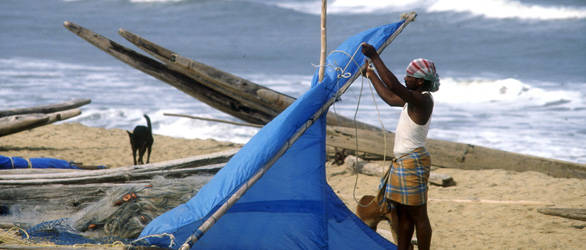
Managing for results
…
FAO’s Resource Mobilization and Management Strategy
In light of the above factors, FAO introduced, in 2011, a corporate Resource Mobilization and Management Strategy to guide FAO efforts in mobilizing the resources required to match its Members’ priorities.
The Strategy focuses on forging resource partnerships built on trust and mutual accountability. It aims to achieve higher and more predictable voluntary contributions that fully support FAO’s achievements and will work to attain the following outcomes:
a) A consolidated, diversified and expanded base of FAO resource partnerships;
b) Wide awareness of FAO’s priority areas and resource requirements through the implementation of a communications plan;
c) An new Organization-wide culture and enhanced capacity for resource mobilization;
d) Resource planning and use effectively managed and reported to the governing bodies and external partners.
Top 20 Resource Partners (bilateral) in 2010 and 2011 as of August 2011 (USD millions)
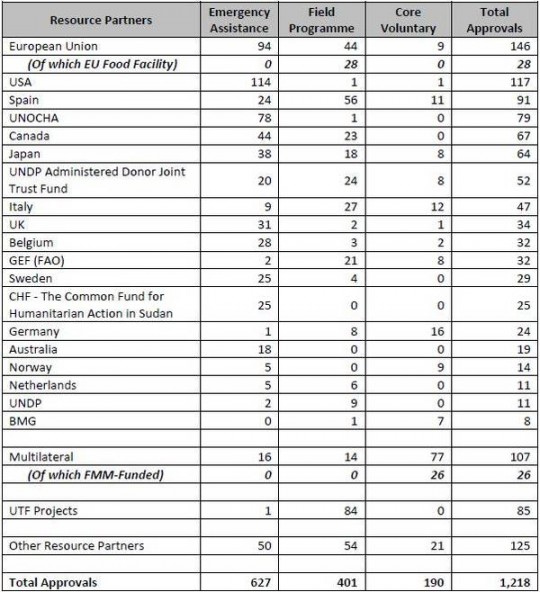
>> One significant means to partner with FAO is through its Impact Focus Areas (IFAs).
FAO aims to mobilize over USD 2 billion in voluntary contributions1 every two years on top of its biennial assessed contributions2 to deliver the objectives agreed by Members in the Strategic Framework.
The Impact Focus Areas (IFAs) are select areas where FAO has a comparative advantage and where additional resources for capacity development and policy support can significantly enhance the impact and sustainability of FAO’s work. The context is the creation and application of global public goods. The aim is to help countries leverage such goods at the national and regional levels for their own benefit, and thereby reinforce food security, nutrition, and the sustainable management of natural resources at the global level.
IFAs highlight priorities identified by Members and by the Organization which require additional resources, with emphasis on capacity building and getting policy frameworks right.
While FAO’s Strategic Objectives link to the ten-year Strategic Framework, IFAs relate to the four-year Medium Term Plan, providing flexibility to respond to changes in the external environment and address emerging priorities.
Global Food Crisis (IFA-CFA)
Scarcity of Water and Land Resources (IFA-WALS)
Transboundary Threats to Production, Health and Environment (IFA-EMPRES)
Capacity Development for Information and Statistics (IFA-CDIS)
Sustainable Forest Management (IFA-SFM)
Global Standard Setting and Implementation into National Policies and Legislation (IFA-SNL)
Code of Conduct for Responsible Fisheries (IFA-CODE)
1 Also known as extrabudgetary resources/funds
2 Also known as the Regular Budget
>> Resource trends
FAO’s Resource Mobilization and Management Strategy recognizes that the external resource environment is constantly changing, as donors and other development partners adapt their policies and approaches to longer term development or emergencies. The following trends in the aid environment have a bearing on the state of agriculture and food security and influences FAO’s ability to deliver on its mandate:
>>> Global trends
The global volume of official development assistance (ODA) to agriculture fell by nearly two thirds between 1980 and 2002, despite the increase of total ODA.
The share of ODA to agriculture declined from 17 percent in 1982 to 3.7 percent in 2002. Figures on public spending also declined. However, at this point in time, these trends are set to reverse, in the wake of the recent global food crisis, and agriculture’s repositioning on the development agenda. These changes are seen as key to poverty reduction and economic growth, and therefore to meeting important Millennium Development Goals.
Additionally, within ODA spending, new emphasis has been placed on the way in which aid is spent. This has been strongly influenced by the Paris Declaration (2005) and The Accra Agenda for Action (2008), which were the result of High Level Forums on Aid Effectiveness. The Forum brought together a wide range of actors which included: developing countries, donors of ODA, hundreds of civil society organisations from around the world, emerging donors, global funds and middle-income countries. More recently, the Accra Agenda for Action, signed in 2008, pledged to accelerate the implementation of the Paris Declaration.
In addition to traditional donors, new donors such as Brazil and China are coming to the fore, as well as other actors such as International Finance Institutions (IFIs) and high level global funding initiatives, the private sector and foundations. Domestic resources are also increasing, whereby governments can afford to pay for services with their own budgets as income increases through taxation, as well as initiatives which promote government spending on agriculture, or that encourage the development of plans of action for food security in order to receive loans from banking institutions.
>>> Regional and sub-regional trends
There are a growing number of players at the regional level, including Regional Economic Integration Organizations (REIOs), regional agricultural initiatives (such as CAADP), and traditional donors that are decentralized.
>>> Country trends
Changing features of the resource environment at the country level include:
– the decentralization of donor funding decisions to the country level;
– the significant presence of Sector Wide Approaches(SWAPs) and the frequent use of Direct Budget Support(DBS) by some development or resource partners in funding field-level operations, in line with the Paris and Accra declarations. Furthermore, the preference of some development partners to make use of the national execution arrangements (which can be partly linked to DBS);
– the growing role of national governments in funding development cooperation activities, in the spirit of mutual accountability through the use of national (fiscal) resources as complementary to those made available by external development partners.
>>> FAO trends
The environment in which FAO mobilizes resources is increasingly competitive, given the rise of numerous development actors, coupled with a scarcity of resources resulting from the recent global economic crisis.
Outlook
Mobilization of new resources shows a downward trend in 2010 for core voluntary and support to the field programme. If the trend continues into 2011, this will have reprecussions on the level of voluntary contributions available for expenditure in the next biennium.
FAO is working under a conservative estimate of USD 601 million in voluntary contributions mobilized for the year 2011 and a total around USD 1.437 billion for the biennium. Resources mobilized for FAO’s emergency and rehabilitaion operations in 2011 are expected to decrease compared to 2010, notwithstanding rising food prices.
Voluntary contributions for FAO’s field programme and core voluntary work may suffer from budget constraints among traditional partners and the phasing out of the European Union Food Facility (EUFF) for developing countries . This will have repercussions on the level of voluntary contributions available for expenditure in FAO’s next biennium (2012-13).
Predictions are difficult to make, yet there are positive signs for the remainder of 2011 and the period further ahead. A number of new resource partners are showing a willingness to commit substantial resources over the year, while Unilateral Trust Funds (UTF), Joint Programmes (JPs) and mechanisms such as the Global Environment Facility (GEF) are maintaining or increasing the levels committed to the Organization in 2010. In the future, FAO expects a rise in un-earmarked funding, and an increase in resources mobilized by decentralized offices from local partners.
Delivery
The voluntary resources actually disbursed in 2010 – 2011, known as delivery, was higher than what was planned, by 41%.
The overall positive delivery trend in 2010 was mostly due to Government Cooperation Projects (GCP), and in particular to the EUFF projects. These projects aim to boost food production in the short to medium term in selected low-income food deficit countries hard hit by the soaring food prices in 2008, and generally cover countries experiencing humanitarian crisis. Considering these projects will end in 2010/2011, FAO needs to mobilize new resources to maintain current levels of delivery for 2012 and 2013 so as to ensure continuity and financial sustainability of the actions engaged in support of food security. This will not be easy given the recent financial crises of OECD countries and the related adoption of austerity measures in many of these countries that foresee significant declines in their official development assistance budgets.
Meanwhile, achieving delivery projections in 2011 may be realistic as FAO’s 2010-12 Programme of Work and Budget (in which FAO sets out all its financial programmes and projections) set out relatively conservative delivery targets. The positive variance is due to accelerated resource mobilization in 2009 that could not be anticipated when the PWB 2010-11 was prepared almost a year in advance of the biennium and because of the lack of information on resource mobilization at country level Strategy team leaders and project budget holders tended to plan conservative estimates based mainly on existing projects, limiting the consideration of prospects of funding which could likely materialize in the next biennium.
FAO’s Resource Mobilization and Management Strategy
The corporate Resource Mobilization and Management Strategy that is being put in place, with the roll out of the various components of FAO’s Country Programming (e.g. Country Programme Frameworks), aims to improve the predictability of funding in terms of level and allocation.
Voluntary Contributions
The graph and table below provide time series analysis of voluntary contributions mobilized by FAO in the period 2006 – 2011 (as of August 2011). The sharp increase in 2008 and 2009 is due to the EU funding for the Food Facility. Resources mobilized for emergencies and rehabilitation have stabilized around an average level of USD 370 million per year in the last four years although with important fluctuations.
Source: FAO Field Programme Monitoring Information Service (FPMIS) and Information Note 5 prepared for the 1st March Informal Meeting, 2011
![FAO Field Programme Monitoring Information Service (FPMIS)] FAO Field Programme Monitoring Information Service (FPMIS)](http://www.medicinezine.com/files/2011/10/de56feebe51-e1318453519412.jpg)

>> ADAM
FAO has recently developed the Agricultural Development Assistance Mapping (ADAM) tool. ADAM is a web-based tool, which supports decentralized offices and technical departments in the identification of FAO comparative advantages, strategic prioritization and resource mobilization at the country and (sub) regional level. It also allows users to better understand Government development priorities, who are the major resource partners in the sector, as well as to assess coherence and possible gaps in addressing agriculture sector priorities.

* The above information is adapted from materials provided by UN Food and Agriculture Organization (FAO)
** More about UN Food and Agriculture Organization (FAO) at : www.fao.org

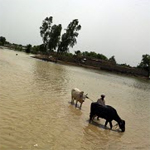 Pakistan flood
Pakistan flood